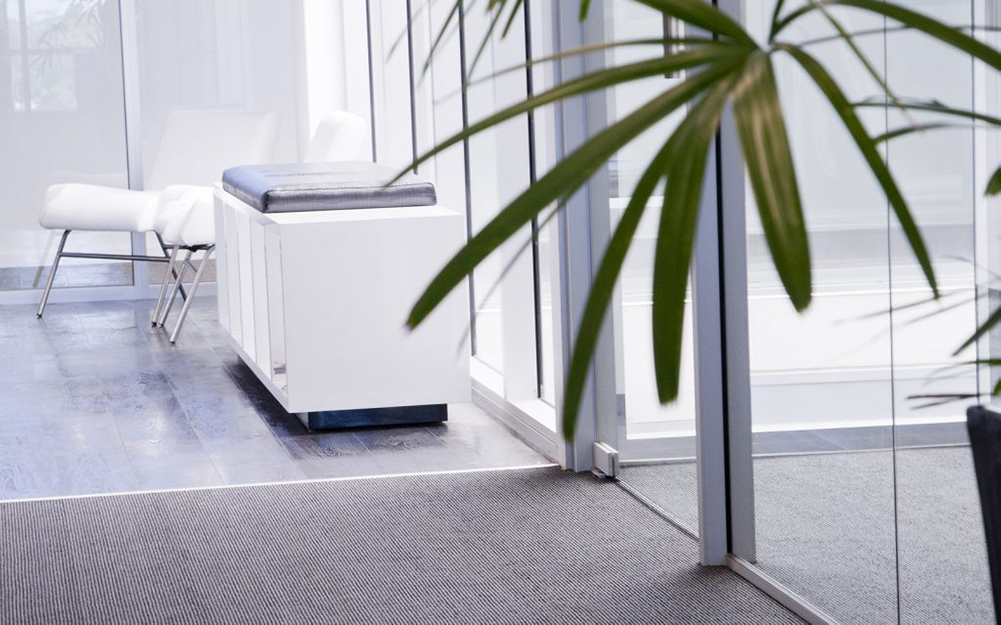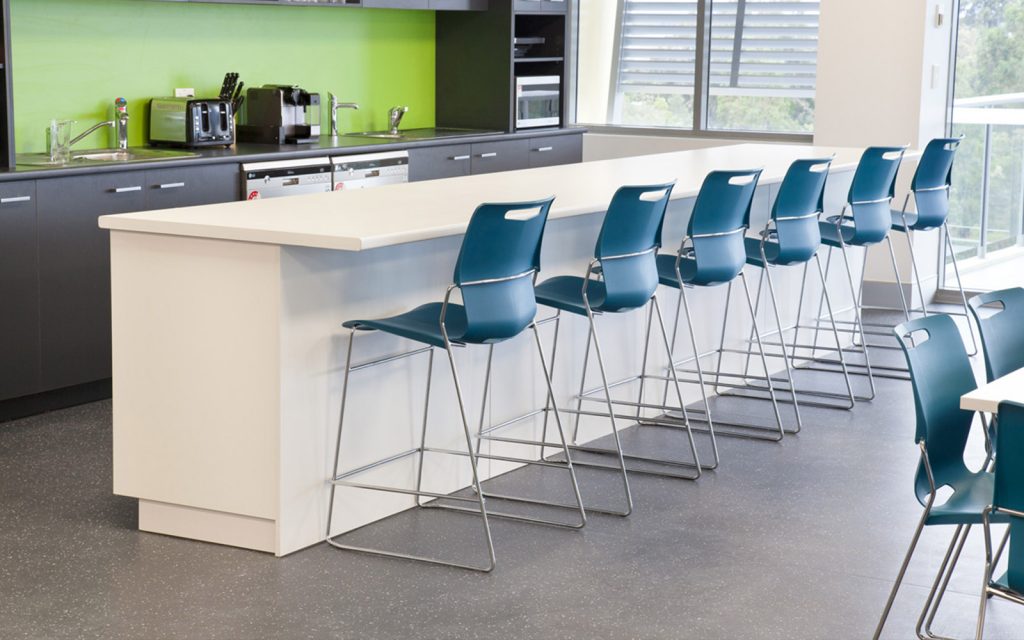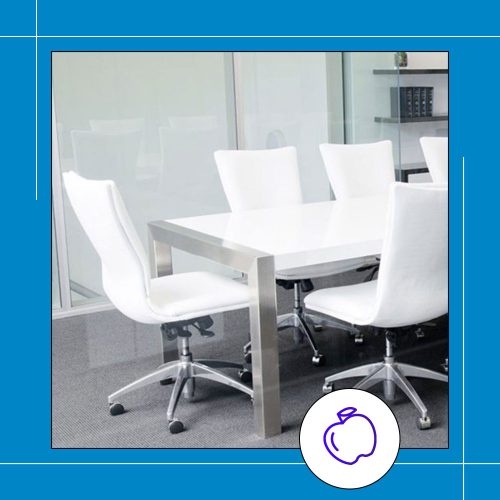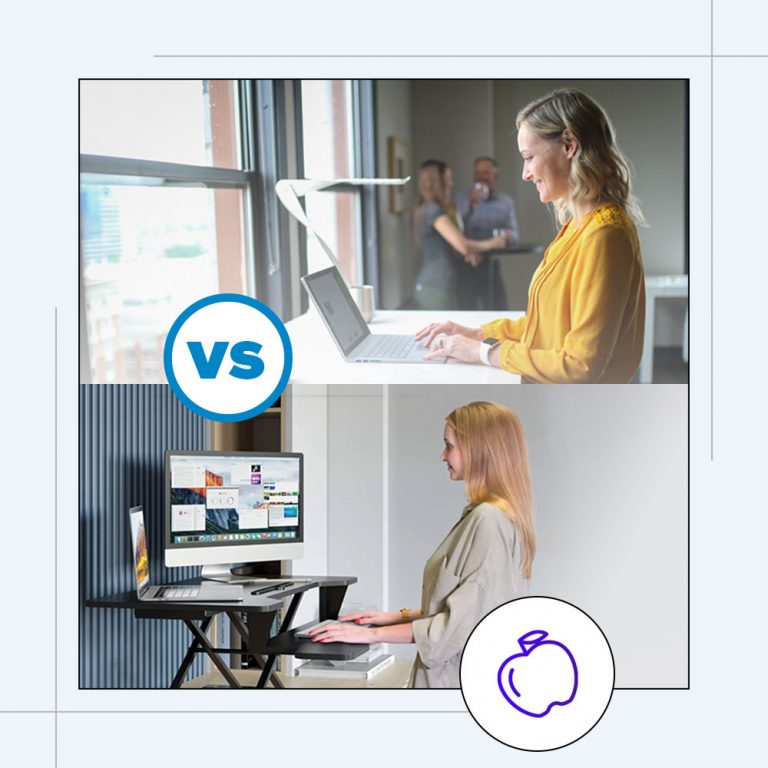Although we usually have little control over the buildings we work in, being aware of unhealthy work environments allows us to take counter-measures to create a healthier workplace. Below are 10 steps to promote a healthier office design and employee well-being, which will ultimately benefit the health your company.
1. Invest In An Ergonomic Chair
Make sure that your chair is comfortable and has an adjustable height support and adjustable arms. When you are sitting straight with feet flat on the floor your arms should be at a 90-degree angle when typing on the computer.
If you are having to strain or stretch to reach your computer then you are putting stress on your back and shoulder area. Ergo chairs can certainly be expensive but in the long run it will cost much less than spending time at the chiropractor.
2. Add Greenery
Plants do more than just enhance the beauty of your surroundings, many actually clean pollutants out of the air as they add oxygen and humidity to the indoor environment.
New research suggests, however, that they may add more than just colour and interest. They also filter the air, and can fight against the common cold. Recent research undertaken by the NASA Space Administration in America has yielded some very interesting results. In a test lasting two years conducted by Dr. B.C. Wolverton at the Stennis Space Centre in Mississippi it was discovered that common houseplants are capable of converting chemical air pollutants into harmless substances.
Ivy, one of the smallest of houseplants, does an excellent job of cleaning the air of toxins, especially benzene and TCE. Chrysanthemum is another goodie. You can place a number of plants around your office or flowers and palms such as Peace Lilies and Parlour Palms. Better still are various forms of Dracaena, Dracaena Warnecki and Dracaena Janet Craig are great for absorbing air pollutants. Chinese Evergreen and the humble Philoderdron are also two to be on the hunt for.

3. Natural Light
Studies suggest that natural light increases human productivity and reduces fatigue and stress. By simply replacing your antiquated fluorescent tubes with full-spectrum tubes, you can instantly enhance your environment and your well-being!
Full spectrum lighting emits a natural, balanced spectrum of light that is the closest you can get to sunlight indoors. Based on years of study not only do they bring out true, vibrant colours but they can also ease eye fatigue, improve your mood, reduce cortisol (stress hormone) levels, slow aging of the retina and reduce glare.
4. Use Aromatherapy
Aromatherapy is the practice of using volatile plant oils, including essential oils, for psychological and physical well-being.
Not only does the aroma of the natural essential oil stimulate the brain to trigger a reaction, but the natural constituents (naturally occurring chemicals) of the essential oil are drawn into the lungs and can also be beneficial to your health. Aromatherapy can help alleviate blocked sinuses, boost your mood, or help alleviate or temporarily eliminate stress.
Scenting your office with Lavender essential oil is said to reduce computer errors at least 25%.
The following is a fantastic blend to use in the office (must have an aromatherapy diffuser: 2 drops of lemon, orange or bergamot; 2 drops of grapefruit; 1 drop ylang ylang, rose or neroli. Add the oils to a bottle, mix well then add the blend to your favourite diffuser.
5. Air Quality
The EPA maintains that 6 out of 10 buildings are “sick” and that indoor air quality is the United States’ number one environmental health problem.
A recent study by the U.S. Dept. of Agriculture found that ionizing a room led to 52% less dust in the air, and 95% less bacteria in the air (since many of the pollutants found in the air reside on floating dust particles).
The U.S.D.A. also performed another study to test the effectiveness of negative ionization at removing airborne Salmonella Enteritidis. The negative ions drastically reduced the airborne salmonella particles, prompting the following statement from the USDA. I recommend a negative ion air purifier for the office setting. These units are small enough to fit on a credenza or desk and are fairly affordable.

6. EMF Protection
Energies from electromagnetic fields emitted from high tension wires, industrial radar, microwave beams, electric current, computers, cell phones, televisions, fluorescent lights and other electrical appliances have been found to be dangerous to our mental and physical health.
When you sleep or work for extensive periods within electromagnetic frequency zones, these energies create a constant source of stress (altering body polarity) which can lead to fatigue, frustration, tension and illness.
Signs of exposure may include drowsiness, chronic aches and pains, sleep disorders, irritability, low energy and general malaise and may lead to more serious health issues. These highly disruptive energy fields actually numb or dull our sense perceptions and adversely impact our brain wave activity.
Studies have also shown electromagnetic fields (EMF) to induce mild depression in many subjects with the disruption of melatonin, dopamine, and serotonin levels. There are many devices that can be used in the office or put on the computer that will give EMF protection.
We recommend the Safe Space II. It is designed to neutralise harmful electromagnetic fields, geopathic disturbances, as well as other detrimental vibrational energies in environments. It is a framed holographic grid (encased behind glass) 2” x 2” and can be attached to any surface…especially the computer monitor. The Safe Space II device clears a spherical area with a 9’ radius. You can read more about it at www.ghchealth.com.
7. Colours
Colour therapy has its roots in ancient Egypt. Scientific studies recognise that colours bring about emotional reactions to individuals. Our reactions and attitudes to colours differ from person to person.
We observe the effects of the colour psychology everywhere.
From merchandising, selling, home decorating, the workplace environment, industry, plant growth, nutrition, physics, physiology, psychology, and art.
Orange – stimulates creativity;
Yellow – intensifies the intellect and heightens motivation.
Red – energises, stimulates action, hunger, passion and revitalisation
Blue – calming, fights physical and mental tension;
Green – fights irritability and has a healing effect on the body.
For more, you can read our guide on how to choose your office colour scheme.

8. Play Music
Music can affect emotional well-being, physical health, social functioning, communication abilities, and cognitive skills.
Music in the workplace either from a radio or just your average headphones can boost your mood, create a lively ambience and start conversations.
Music can provide mental stimulation while performing monotonous tasks, which can help to reduce stress levels in the office.
Some people, however, find music in the office intensely annoying, especially if it is too loud or inappropriate. I have found that soft, up-lifting music is very essential to the office “atmosphere”.
9. Encourage Breaks
Even the most focused person needs a break at least twice a day. A change of scenery also helps calm the body and mind.
One of the best ways to eliminate stress and recharge the body is to go outside for a ten-minute walk.
Focus on your surroundings and take deep breaths. This will give you a renewal of energy and will also aid in Vitamin D production. Walk by yourself and focus on clearing your mind. Walking will also get the blood and the lymphatic system flowing.
10. Organisation
It is an excellent idea to look into Feng Shui for the office. Feng Shui is basically an environmental science and gives advice on how to create environments in which we feel comfortable and balanced.
For example, water energy plays a significant role in Feng Shui as well as the flow of energy. Having a small fountain or zen garden in your office can also promote a sense of calm and peacefulness.
A well-organised, uncluttered desk leads to clear thinking and reduces stress. Make a habit of putting items back in their original place after you are finished using them.
Putting in the extra time, effort and money in getting your office environment “healthy” will pay-off with a multitude of health benefits.
Of course, it is assumed that when you are out of the office, you are also taking care of yourself by eating a healthy diet, exercising the body and mind, taking good supplementation and getting adequate rest.
All of this goes hand-in-hand in getting and keeping the body healthy. Remember to address your attitude as you travel the path to good health, as negative attitudes are self-destructive. Good health requires desire, determination and discipline in every aspect of your life.













